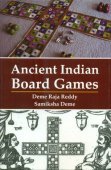Amusement: 2 definitions
Introduction:
Amusement means something in Jainism, Prakrit, the history of ancient India. If you want to know the exact meaning, history, etymology or English translation of this term then check out the descriptions on this page. Add your comment or reference to a book if you want to contribute to this summary article.
In Jainism
General definition (in Jainism)
Source: academia.edu: Tessitori Collection IAmusement refers to one of the “thirteen difficulties”, according to the “Teraha kāṭhīyā-svādhyāya” by Jinaharṣa (dealing with the Ethics section of Jain Canonical literature), which is included in the collection of manuscripts at the ‘Vincenzo Joppi’ library, collected by Luigi Pio Tessitori during his visit to Rajasthan between 1914 and 1919.—The exposition of the ‘thirteen difficulties’ [e.g., amusement (kautuhala or variants)] against which one should fight as they are hindrances to proper religious practice is a widespread topic in Jain literature in Gujarati.

Jainism is an Indian religion of Dharma whose doctrine revolves around harmlessness (ahimsa) towards every living being. The two major branches (Digambara and Svetambara) of Jainism stimulate self-control (or, shramana, ‘self-reliance’) and spiritual development through a path of peace for the soul to progess to the ultimate goal.
India history and geography
Source: Singhi Jain Series: Ratnaprabha-suri’s Kuvalayamala-katha (history)Amusement (of holding pet birds) represents a scene of human life commonly depicted on the Saṃsāracakra paintings, in ancient India, as mentioned in the Kathās (narrative poems) such as Uddyotanasūri in his 8th-century Kuvalayamālā (a Prakrit Campū, similar to Kāvya poetry).—Page 185.21 f.: Here follows a description of a printed scroll illustrating the Jaina conception of saṃsāracakra. [...] The saṃsāra-cakra illustrated the three worlds of hell, human world and the world of gods. [For example:] Persons shooting animals with bow and arrow; a person holding a naked sword and showing feats of swordsmanship; parrots and magpies put in cages for amusement

The history of India traces the identification of countries, villages, towns and other regions of India, as well as mythology, zoology, royal dynasties, rulers, tribes, local festivities and traditions and regional languages. Ancient India enjoyed religious freedom and encourages the path of Dharma, a concept common to Buddhism, Hinduism, and Jainism.
See also (Relevant definitions)
Full-text (+308): Keli, Krida, Lilavatara, Rangila, Vinoda, Upamshukridita, Balakeli, Kridana, Manoranjana, Narmasaciva, Cayani, Vyatyukshi, Kelikalita, Narmasacivya, Lilayita, Narmmasacivya, Kautuka, Gamvakharca, Kalakramana, Uyyanakila.
Relevant text
Search found 108 books and stories containing Amusement; (plurals include: Amusements). You can also click to the full overview containing English textual excerpts. Below are direct links for the most relevant articles:
Trishashti Shalaka Purusha Caritra (by Helen M. Johnson)
Part 6: Vasudeva leaves home < [Chapter II - Marriages of Vasudeva with maidens]
Part 5: Ṛṣabha’s childhood < [Chapter II]
Part 1: Marriage with Rukmiṇī < [Chapter VI - Marriage of Kṛṣṇa with Rukmiṇī and others]
Vastu-shastra (4): Palace Architecture (by D. N. Shukla)
Chapter 3d - The varieties of Yantras (mechanical devices)
Temples in and around Madurantakam (by B. Mekala)
Secular Functions of the Temple < [Chapter 2 - Temples: Role and Influence]
The Gautami Mahatmya (by G. P. Bhatt)
The Tattvasangraha [with commentary] (by Ganganatha Jha)
Verse 161 < [Chapter 6 - Doctrine of the Spirit (puruṣa) Personality as cause of the world]
Verse 162-163 < [Chapter 6 - Doctrine of the Spirit (puruṣa) Personality as cause of the world]
Verse 169 < [Chapter 6 - Doctrine of the Spirit (puruṣa) Personality as cause of the world]
Manusmriti with the Commentary of Medhatithi (by Ganganatha Jha)
Verse 8.365 < [Section XLVI - Adultery]
Verse 1.80 < [Section XLIX - Manvantara]
Verse 9.74 < [Section VI - Duties of the Husband going Abroad]
Related products
